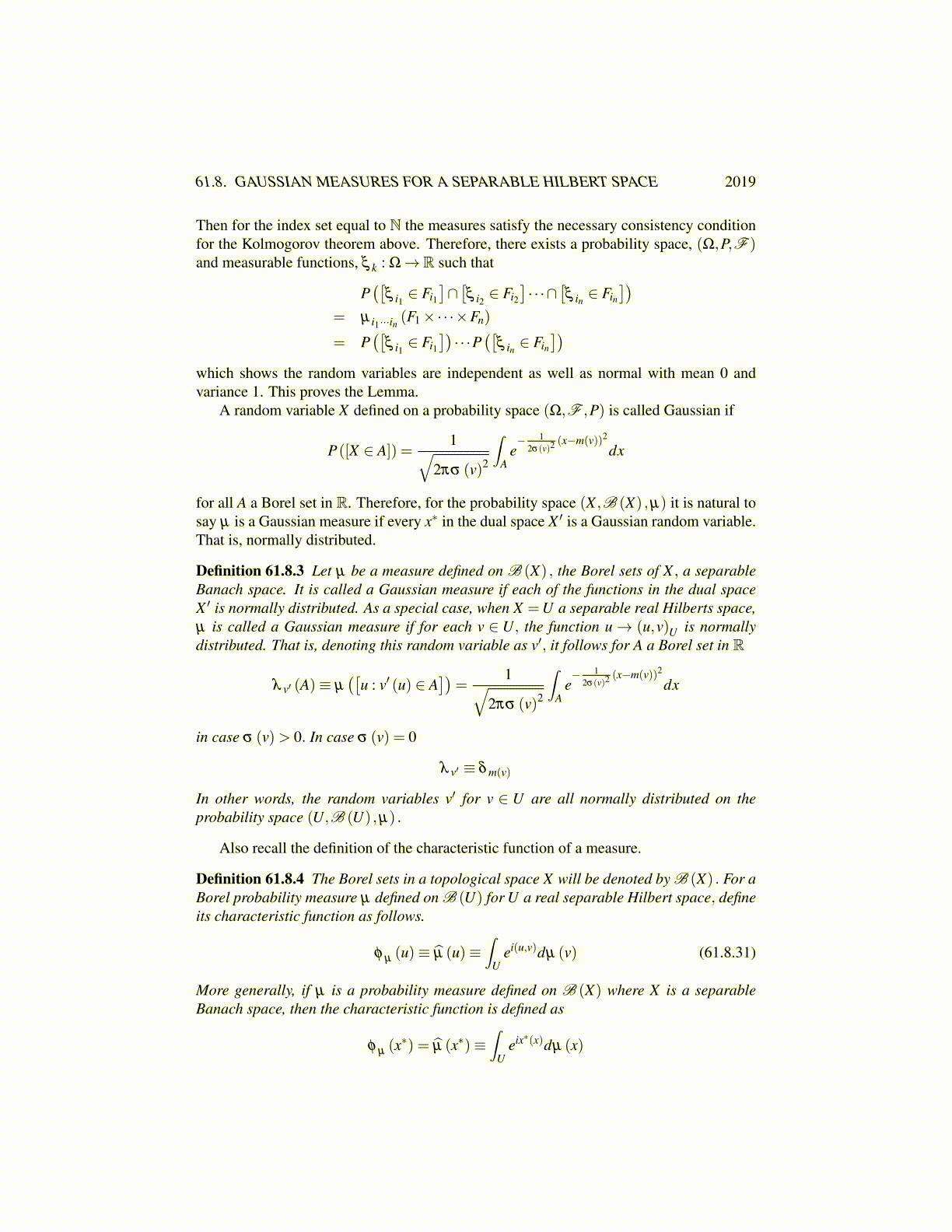
61.7. GAUSSIAN MEASURES 2019
Consequently, αn (r)≤ α0 (r)2n
and also
P(||X ||> tn) = αn (r)P(||X || ≤ r)
≤ P(||X || ≤ r)α0 (r)2n
= P(||X || ≤ r)eln(α0(r))2n. (61.7.27)
Now using the distribution function technique and letting λ > 0,∫E
eλ ||x||2dµ =∫
∞
0µ
([eλ ||x||2 > t
])dt
= 1+∫
∞
1µ
([eλ ||x||2 > t
])dt
= 1+∫
∞
1P([
eλ ||X ||2 > t])
dt. (61.7.28)
From 61.7.27,
P([
exp(
λ ||X ||2)> exp
(λ t2
n)])≤ P([||X || ≤ r])eln(α0(r))2n
.
Now split the above improper integral into intervals,(exp(λ t2
n),exp
(λ t2
n+1))
for n =
0,1, · · · and note that P([
eλ ||X ||2 > t])
is decreasing in t. Then from 61.7.28,
∫E
eλ ||x||2 dµ ≤ exp(λ r2)+ ∞
∑n=0
∫ exp(λ t2n+1)
exp(λ t2n)
P([
eλ ||X ||2 > t])
dt
≤ exp(λ r2)+ ∞
∑n=0
P([
eλ ||X ||2 > exp(λ t2
n)])(
exp(λ t2
n+1)− exp
(λ t2
n))
≤ exp(λ r2)+ ∞
∑n=0
P([||X || ≤ r])eln(α0(r))2nexp(λ t2
n+1)
≤ exp(λ r2)+ ∞
∑n=0
eln(α0(r))2nexp(λ t2
n+1).
It remains to estimate tn+1. From the description of the tn,
tn =
(n
∑k=0
(√2)k)
r = r
(√2)n+1
−1√
2−1≤√
2√2−1
r(√
2)n
and sotn+1 ≤ 5r
(√2)n
Therefore, ∫E
eλ ||x||2 dµ ≤ exp(λ r2)+ ∞
∑n=0
eln(α0(r))2n+λ25r22n.